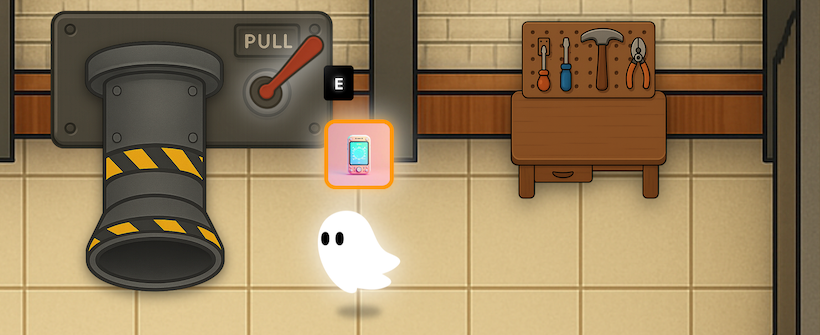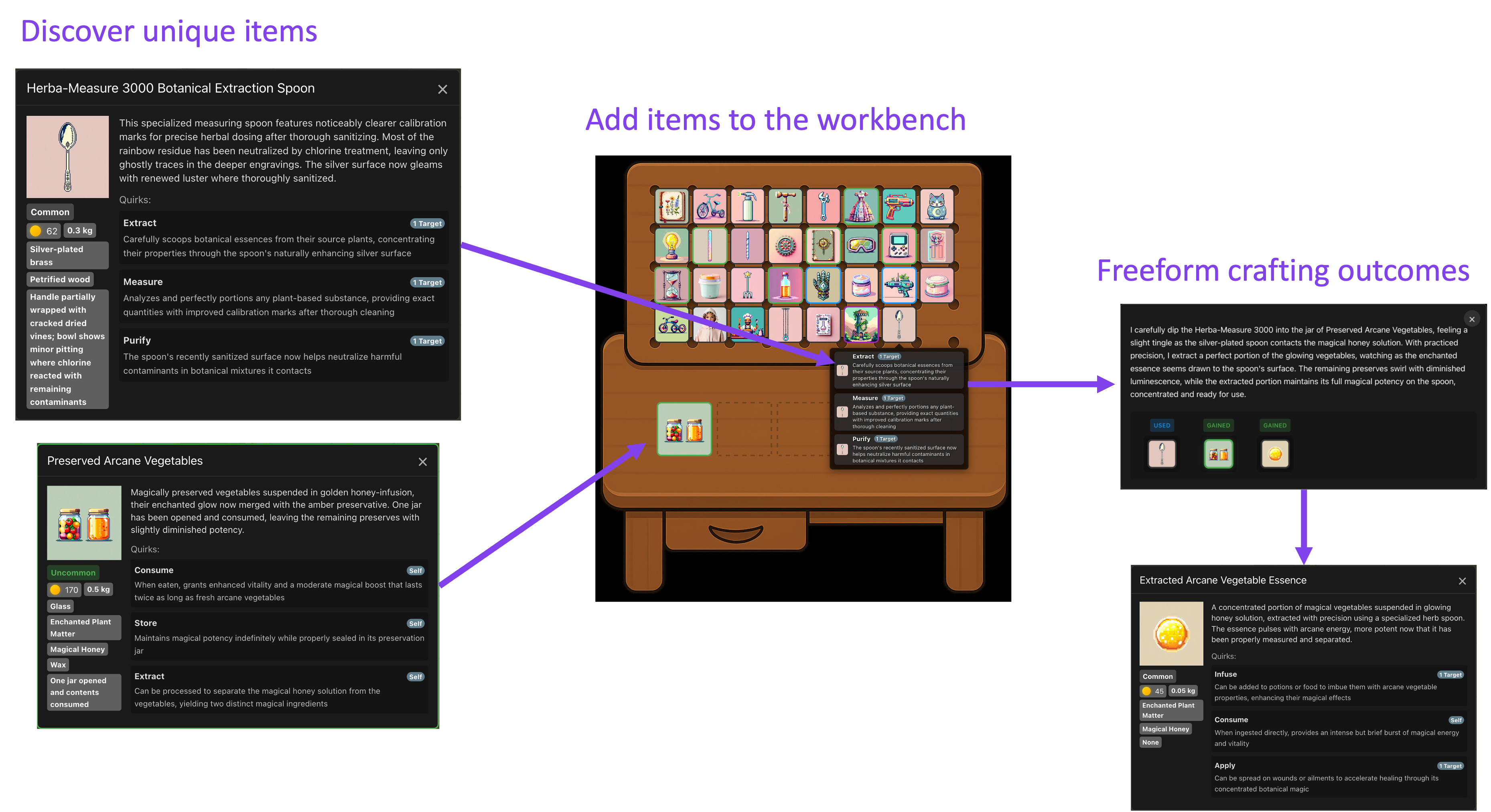In this guide, you will learn how to use Kiro by completing tasks in the codebase for a sample video game called Spirit of Kiro.
95% of the code for Spirit of Kiro has been written by prompting Kiro. You are going to be using Kiro to fix bugs and add features to the game to complete it.
Loading image...
Spirit of Kiro is an infinite crafting game in which you can:
- Discover unique, randomly generated objects
- Utilize these items on each other via simulated interactions like "cut", "paint", "glue", "enchant". Item's combine, break apart, and change in response to these interactions.
- Sell your resulting creations to an AI appraiser.
Every object in the game is generated by AI. Interactions between objects are also simulated by AI. This gives Spirit of Kiro infinite replayability and potential.
In the following diagram you can see how the game's core crafting mechanic works. The player has discovered two items: a spoon, and a glass jar of vegetables. The player can use the spoon to extract a sample of the vegetables.
Loading image...
While the game’s core loop is complete, the game is not quite done yet. There is an extensive roadmap for the game, full of additional ideas to build, and there a few bugs that have been left in the game on purpose so you can try out solving them using Kiro.
In this guide you will learn to use Kiro by completing a series of tasks
on a challenge branch of the open source code for this game. Ready to get started?
Let's go!
1
Setup
First, we ensure that you have an AWS account. We setup a Cognito user pool for authentication, build and launch the game stack using a Docker Compose file, then bootstrap DynamoDB tables. Then we verify that the game runs on your local machine:
2
Task: Improve game homepage
We setup steering files to help Kiro understand the project. With a full understanding of the project, we put Kiro to work improving the home landing page for the game.
3
Bug Fix: Physics Glitch
When we tab out of game, the physics goes haywire when tabbing back in. Can Kiro fix it?
4
Bug Fix: Interactions Oversight
The original pass at game interactions was "vibe coded". But it looks like AI missed something. Can Kiro correct its own mistake?
5
Refactor: DRY up code with Kiro
It's not just vibe coding, we do vibe refactoring here as well.
6
New Feature: Implementing something complex
The game is currently missing email verification and password reset. We implement this relatively complex new feature across client and server.
7
Automation: Managing assets with agent hooks
We identify some boilerplate asset management work that that is error prone. Fortunately Kiro agent hooks can help us automate this.
8
Extending Kiro with MCP
Not only can you make this game your own, you can also make Kiro your own, by extending its context and behaviors with Model Context Protocol (MCP).
9
Conclusion
Wrap up your learning journey and explore next steps.
Page updated: November 18, 2025
Learn by playing